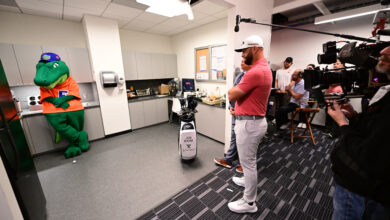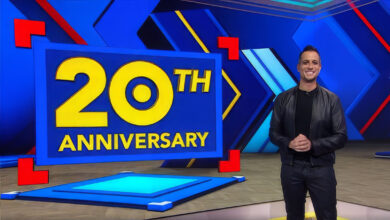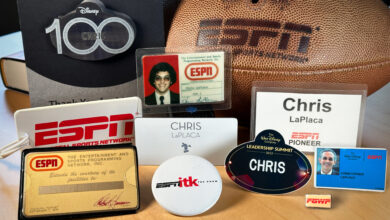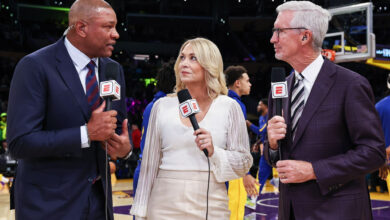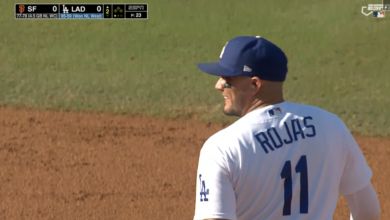More than meets the eye: ESPN helps Library of Congress launch “Baseball Americana”
Part 2 of 5: ESPN's Stats and Info Group helps tell story behind this 1859 report on historic Williams and Amherst "baseball and chess match"
EDITOR’S NOTE: On Friday, June 29, the Library of Congress will open its latest exhibit “Baseball Americana” with help from ESPN’s very own Statistics and Information Group (SIG). The exhibit will explore baseball’s roots, its changing traditions and the state of the game today. SIG collaborated with the Library on more than 100 artifacts to develop original content in the form of statistics, trivia questions and historical comparisons to offer new insights into America’s game for everyone, from rookies to the most die-hard baseball fans. With this entry, Front Row continues a five-part series this week illustrating an artifact and providing some of the data SIG provided for the Library of Congress’ exhibit.
Amherst (Mass.) Express news article on baseball and chess match
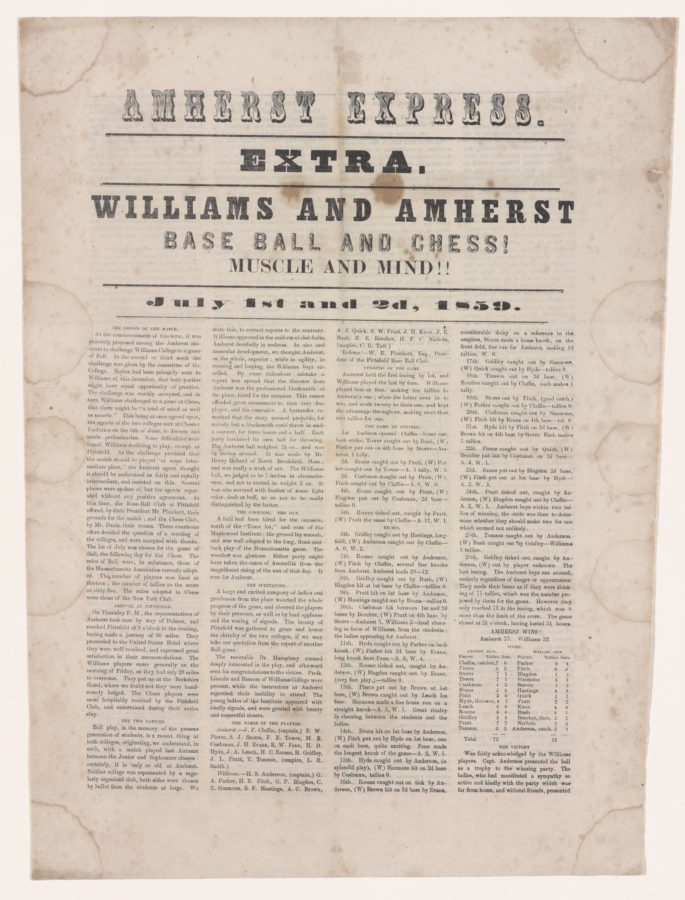
- This newspaper article from 1859 describes the first intercollegiate baseball game, which took place between Williams and Amherst in Pittsfield, Mass. on July 1, 1859. In order to agree to the game being played, the Williams student body insisted on a chess match the following day to provide “a trial of mind as well as muscle,” hence the headline.
- The game consisted of a pre-determined maximum score, and they would play as many innings as it took to reach it. It is worth noting that there was only one out per inning at that time, and outs could be made by hitting a runner with a thrown ball. There was also no foul territory, and the ball could be hit in any direction. The game lasted 26 innings, with Amherst defeating Williams, 73-32.
- Amherst would go on to win the chess match the next day as well, with Amherst’s leadoff batter from the day before, James Claflin, participating in that match as well. Each team used drastically different balls as each provided its own, and a pair that survived that game remain on display at Amherst.
EDITOR’S NOTE: On Wednesday, Front Row will publish Part 3 in this series.
